#machine vision
Text

Week in Review
October 23rd-29th
Welcome to Fragile Practice, where I attempt to make something of value out of stuff I have to read.
My future plan is to do longer-form original pieces on interesting topics or trends. For now, I'm going to make the weekly reviews habitual and see if I have any time left.
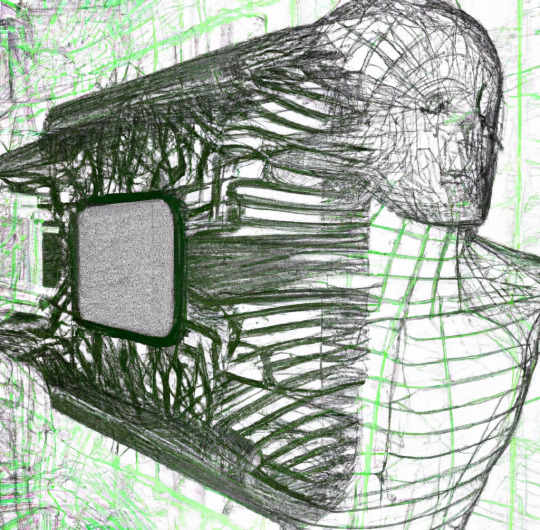
Technology
OpenAI forms team to study ‘catastrophic’ AI risks, including nuclear threats - Tech Crunch; Kyle Wiggers
OpenAI launched a new research team called AI Safety and Security to investigate the potential harms of artificial intelligence focused on AI alignment, AI robustness, AI governance, and AI ethics.
Note: Same energy as “cigarette company funds medical research into smoking risks”.
Artists Allege Meta’s AI Data Deletion Request Process Is a ‘Fake PR Stunt’ - Wired; Kate Knibbs
Artists who participated in Meta’s Artificial Intelligence Artist Residency Program accused the company of failing to honor their data deletion requests and claim that Meta used their personal data to train its AI models without their consent.
Note: Someday we will stop being surprised that corporate activities without obvious profit motive are all fake PR stunts.
GM and Honda ditch plan to build cheaper electric vehicles - The Verge; Andrew J. Hawkins
General Motors and Honda cancel their joint venture to develop and produce cheaper electric vehicles for the US market, citing the chip shortage, rising costs of battery materials, and the changing market conditions.
Note: What are the odds this isn’t related to the 7 billion dollars the US government announced to create hydrogen hubs.
'AI divide' across the US leaves economists concerned - The Register; Thomas Claburn
A new study by economists from Harvard University and MIT reveals a significant gap in AI adoption and innovation across different regions in the US.
The study finds that AI usage is highest in California's Silicon Valley and the San Francisco Bay Area, but was also noted in Nashville, San Antonio, Las Vegas, New Orleans, San Diego, and Tampa, as well as Riverside, Louisville, Columbus, Austin, and Atlanta.
Nvidia to Challenge Intel With Arm-Based Processors for PCs - Bloomberg; Ian King
Nvidia is using Arm technology to develop CPUs that would challenge Intel processors in PCs, and which could go on sale as soon as 2025.
Note: I am far from an NVIDIA fan, but I’m stoked for any amount of new competition in the CPU space.
New tool lets artists fight AI image bots by hiding corrupt data in plain sight - Engadget; Sarah Fielding
A team at the University of Chicago created Nightshade, a tool that lets artists fight AI image bots by adding undetectable pixels into an image that can alter how a machine-learning model produces content and what that finished product looks like.
Nightshade is intended to protect artists work and has been tested on both Stable Diffusion and an in-house AI built by the researchers.
IBM's NorthPole chip runs AI-based image recognition 22 times faster than current chips - Tech Xplore; Bob Yirka
NorthPole combines the processing module and the data it uses in a two-dimensional array of memory blocks and interconnected CPUs, and is reportedly inspired by the human brain.
NorthPole can currently only run specialized AI processes and not training processes or large language models, but the researchers plan to test connecting multiple chips together to overcome this limitation.
Apple’s $130 Thunderbolt 4 cable could be worth it, as seen in X-ray CT scans - Ars Technica; Kevin Purdy
Note: These scans are super cool. And make me feel somewhat better about insisting on quality cables. A+.

The Shifting Web
On-by-default video calls come to X, disable to retain your sanity - The Register; Brandon Vigliarolo
Video and audio calling is limited to anyone you follow or who is in your address book, if you granted X permission to comb through it.
Calling other users also requires that they’ve sent at least one direct message to you before.
Only premium users can place calls, but everyone can receive them.
Google Search Boss Says Company Invests to Avoid Becoming ‘Roadkill’ - The New York Times; Nico Grant
Google’s senior vice president overseeing search said that he sees a world of threats that could humble his company at any moment.
Google Maps is getting new AI-powered search updates, an enhanced navigation interface and more - Tech Crunch; Aisha Malik
Note: These AI recommender systems are going to be incredibly valuable advertising space. It is interesting that Apple decided to compete with Google in maps but not in basic search, but has so far not placed ads in the search results.
Reddit finally takes its API war where it belongs: to AI companies - Ars Technica; Scharon Harding
Reddit met with generative AI companies to negotiate a deal for being paid for its data, and may block crawlers if no deal is made soon.
Note: Google searches for info on Reddit often seem more effective than searching Reddit itself. If they are unable to make a deal, and Reddit follows through, it will be a legitimate loss for discoverability but also an incredibly interesting experiment to see what Reddit is like without Google.
Bandcamp’s Entire Union Bargaining Team Was Laid Off - 404 Media; Emanuel Maiberg
Bandcamp’s new owner (Songtradr) offered jobs to just half of existing employees, with cuts disproportionately hitting union leaders. Every member of the union’s eight-person bargaining team was laid off, and 40 of the union's 67 members lost their jobs.
Songtradr spokesperson Lindsay Nahmiache claimed that the firm didn’t have access to union membership information.
Note: This just sucks. Bandcamp is rad, and it’s hard to imagine it continuing to be rad after this. I wonder if Epic had ideas for BC that didn’t work out.

Surveillance & Digital Privacy
Mozilla Launches Annual Digital Privacy 'Creep-o-Meter'. This Year's Status: 'Very Creepy' - Slashdot
Mozilla gave the current state of digital privacy a 75.6/100, with 100 being the creepiest.
They measured security features, data collection, and data sharing practices of over 500 gadgets, apps, and cars to come up with their score.
Every car Mozilla tested failed to meet their privacy and security standards.
Note: It would be great if even one auto brand would take privacy seriously.
EPIC Testifies in Support of Massachusetts Data Privacy and Protection Act -Electronic Privacy Information Center (EPIC)
Massachusetts version of ADPPA.
Note: While it may warm my dead heart to see any online privacy protections in law, scrambling to do so in response to generative AI is unlikely to protect Americans in any meaningful way from the surveillance driven form of capitalism we’ve all been living under for decades.
Complex Spy Platform StripedFly Bites 1M Victims - Dark Reading
StripedFly is a complex platform disguised as a cryptominer and evaded detection for six years by using a custom version of EternalBlue exploit, a built-in Tor network tunnel, and trusted services like GitLab, GitHub, and Bitbucket to communicate with C2 servers and update its functionality.
iPhones have been exposing your unique MAC despite Apple's promises otherwise - Ars Technica
A privacy feature which claimed to hide the Wi-Fi MAC address of iOS devices when joining a network was broken since iOS 14, and was finally patched in 17.1, released on Wednesday.
Note: I imagine this bug was reported a while ago, but wasn’t publically reported until the fix was released as a term of apple’s bug bounty program.
What the !#@% is a Passkey? - Electronic Frontier Foundation
Note: I welcome our passkey overlords.
#surveillance#tech#technology#news#ai#generative ai#machine vision#electric vehicles#evs#hydrogen#futurism#Apple#iphone#twitter#bandcamp#labor unions#digital privacy#data privacy#espionage#passkeys
11 notes
·
View notes
Link
Developed by a group of four graduate students from China’s Wuhan University, the InvisDefense coat was one of the projects that attained the first prize at the “Huawei Cup,” an inaugural cybersecurity innovation contest supported by Chinese technological giant Huawei.
“We spent a lot of energy preparing for this, including this product’s design and development,” Wei Hui, the computer science graduate student who designed the coat’s core algorithm, told VICE World News.
If you’re wondering how a bunch of Chinese students can get away with developing an invisibility technology in perhaps the most surveilled country in the world, this is the reason:
[The researchers] are not out to subvert the state’s sweeping surveillance system. In fact, according to the team, they are hoping to strengthen it.
“The fact that security cameras cannot detect the InvisDefense coat means that they are flawed,” said Wei. “We are also working on this project to stimulate the development of existing machine vision technology, because we’re basically finding loopholes.”
The dystopia continues.
12 notes
·
View notes
Text
youtube
2 notes
·
View notes
Text
Machine Vision - Industry Size and Future Analysis
The global machine vision market is experiencing growth and is projected to reach USD 27.86 billion by 2030.
The growth can be attributed to the increasing demand for quality inspection and automation across various industries, along with significant research and development investments by major players and advancements in technology.
In recent years, PC-based machine vision systems have…

View On WordPress
0 notes
Text
Application Solutions for Intelligent Service Robots Based on the FET3588J-C Main Control Platform
An intelligent service robot is a robot that integrates advanced technologies such as artificial intelligence, perception technology, and machine learning. Its purpose is to provide a variety of services and support to meet the needs of people in daily life, business, and industrial fields. These robots can sense the environment, understand speech and images, perform tasks, and interact naturally and intelligently with human users.

Areas of Application:
Business Services: It includes services such as reception, shopping assistance, and information inquiry, and can be used in places such as shopping malls, hotels, and exhibitions.
Health Care: It provides services such as drug delivery, patient companionship and health monitoring for hospitals and nursing homes.
Educational Assistance: It is used in educational scenarios to provide auxiliary teaching, answering questions and other services.
Family Services: Provide cleaning, handling, home control and other services to improve the quality of life.
The hardware structure of the service robot includes several key components. The functions and roles of these hardware components are as follows:
Controls: As the core of the robot, the control device is responsible for receiving and processing the data provided by the sensors, executing the corresponding algorithms, and issuing instructions to the driving device to achieve the various functions of the robot. High-performance, low-power ARM chips are often chosen for the control unit, ensuring that the robot has sufficient computational and storage capacity.
Drive unit: This includes motors and drivers, which are used to execute the motion and action commands of the robot. The motor is responsible for providing power, while the driver converts electronic signals into mechanical motion. This part is the motion system of the robot, which determines the execution of actions such as walking, turning, and the mechanical arm.
Camera: As the ''eyes'' of the robot, the camera is used to capture images and facial information of the external environment. These image data can be used for tasks such as environmental perception, navigation, target recognition, allowing the robot to better understand and adapt to the surrounding environment.
Sensors: Sensors provide the robot with various perceptual abilities, including vision, touch, hearing, and distance sensing, among others. Angle sensors and current sensors reflect the robot's own state, while temperature sensors, laser sensors, ultrasonic sensors, infrared sensors, etc. are used to collect external environmental information, allowing the robot to perceive and understand the surrounding situation more comprehensively.
Display and Audio: As an important part of human-computer interaction, display and audio devices realize the presentation and interaction of user interface. The touch display provides an intuitive graphical user interface, while the voice interaction system enables the robot to understand the user's instructions and respond accordingly, thus better communicating with the human user.

Folinx Embedded has launched the FET3588J-C SoM as the main control platform for this intelligent inspection robot product to meet customers' needs for machine vision and high-speed interfaces.
FET3588J-C SoM is developed and designed based on Rockchip's RK3588 processor, integrating Cortex-A74-core-6 + 4-core Cortex-A55 architecture. The main frequency of A76 core is up to 2.4GHz, and the main frequency of A55 core is up to 1.8GHz, which can efficiently process the information collected by patrol inspection;
The built-in NPU with comprehensive computing power of up to 6 TOPS greatly improves the calculation speed and energy efficiency of neural networks,providing robots with powerful AI learning and edge computing capabilities, enabling them to intelligently adapt to different work scenarios.
RK3588J supports a 48-megapixel ISP3.0, which enables lens shading correction, 2D/3D noise reduction, sharpening and haze removal, fish eye correction, gamma correction, wide dynamic range contrast enhancement, and other effects. This significantly enhances the image quality.
With abundant interface resources, it meets the robot's access requirements for various sensors. More sensor access helps the device to collect environment data more comprehensively. This platform also supports external storage interfaces such as SATA3.0, USB3.0, allowing data to be locally stored. It also supports wireless communication methods such as WiFi, 4G, and 5G, making it convenient for users to query device information on mobile devices. The rich functionality enables robots to perceive and understand the surrounding environment more comprehensively.
It also has high stability. The platform’s SoM has undergone rigorous environmental temperature and pressure tests, and can operate for long periods in harsh industrial environments ranging from -40°C to +85°C, adapting to applications in various scenarios.
Originally published at www.forlinx.net.
0 notes
Text
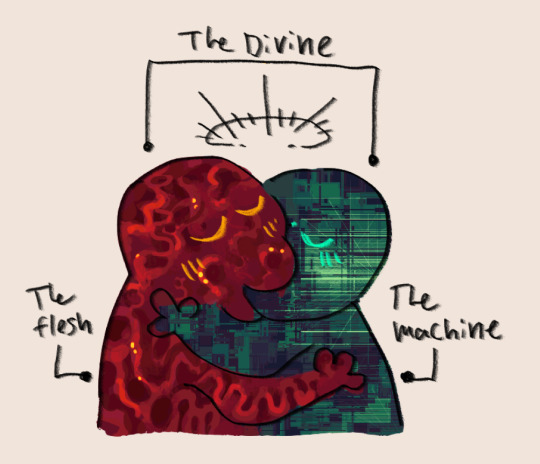
Do you see my vision? The world could be such a beautiful place...
Sorry for all the shitposts doodles and sketches recently sdlgkjsgdfg, the worms in my brain are everywhere right now.
9K notes
·
View notes
Text
Crossing the Boundary: Artificial Intelligence and Human Cooperation in the 21st Century
The Mergence of Artificial and Human Intelligence:
As the twenty-first century progresses, the rapidly changing technological environment offers us both unheard-of potential and difficulties. Artificial intelligence (AI) and humans are deeply collaborating at the forefront of this digital frontier. This contemporary journey explores the complex web created by artificial intelligence (AI) and human intellect, a collaboration that could fundamentally alter our future in ways we have only just begun to understand.
We set out on an excursion to discover the depths of this convergence. Along the way, we'll tackle ethical conundrums, explore the ramifications of AI-human collaboration in a variety of sectors, and learn about the complexities of AI-human collaboration.
To enhance your knowledge must visit and read this book:
The Start of a Novel Collaboration
Collaboration between AI and humans has its roots in the idea that AI should support human pursuits rather than take their place. Artificial Intelligence (AI) is a tool, a technological creation of human creativity, intended to increase human potential and open up new paths. We'll examine the beginnings of this collaboration and its development over time in this chapter.
AI as a Tool to Enhance Human Intelligence
Fundamentally, artificial intelligence is a digital marvel that performs very well on jobs requiring large datasets, intricate pattern recognition, and quick calculation. AI is our ally in industries like manufacturing, healthcare, and finance because it can automate tedious jobs, make data-driven forecasts, and support decision-making. It acts to enhance human intelligence. It increases human intellect by multiplying the power of our cognitive capacities.
The Function of Data: AI's Lifeblood
Data is the foundation of artificial intelligence (AI). Machines can quickly sort through enormous amounts of information to find trends and patterns that would take people years to notice. We will examine the crucial role that data plays in the AI-human partnership and how it influences our relationship by providing the machine with information that feeds its learning algorithms, making it more capable of helping us.
Teamwork and Originality
The effect that AI-human collaboration has on human creativity is among its most fascinating features. Artificial intelligence (AI) can be more than just a tool for processing data and solving equations; it can also be an inspiration, pushing the limits of artful and imaginative manifestation.
Artistic AI
AI compositions and helpful technologies allow musicians to explore hitherto undiscovered sonic territories. AI-generated images serve as a source of inspiration for visual artists, who employ AI algorithms to produce art that combines inventive machine vision with human vision. AI is used by writers to come up with story twists, come up with ideas for new content, and even help with editing. We'll take a tour through the worlds of literature, music, and art, examining how AI may be a creative person's collaborator and muse.
Discovering Your Creative Potential
The combination of artificial intelligence and human creativity pushes the boundaries of human imagination. By doing away with some of the tedious work and offering original insights, AI helps writers, musicians, and artists concentrate on the core of their work, advancing their creative careers. We'll explore how, in the digital age, this partnership is changing what it means to be an individual creative.
Using AI to Spark Discovery
Collaboration between AI and humans goes far beyond the arts; it serves as a spur for scientific research and a helping hand in the quest for knowledge and creativity. We'll look at how AI is changing scientific research, medicine, and astronomy in this chapter.
AI in Astronomy: Opening Up the Cosmos
Large-scale data analysis is essential to astronomy, and artificial intelligence (AI) has shown itself to be a potent tool for recognizing celestial phenomena, forecasting cosmic events, and assisting astronomers in their space travels. We'll set out on a cosmic voyage, seeing firsthand how artificial intelligence functions as a telescope to the invisible, unveiling mysteries concealed in the night sky.
AI and Medicine: A Curative Collaboration
AI is used in medicine to help physicians with disease diagnosis, individualized therapy planning, and system management. We'll look at how AI's analytical abilities are changing the healthcare industry and providing promise for better patient care, illness prediction, and more effective healthcare administration.
AI in Science: The Contemporary Alchemist
Artificial intelligence (AI) is used in science to evaluate complex data, execute simulations, and test theories. In particle physics, climate science, genetics, and other fields of science, researchers have discovered that AI is a trustworthy ally in the process of solving complex scientific puzzles. We'll explore these scientific fields where artificial intelligence is advancing research and knowledge.
The Path of Ethics
A pilgrimage is never really accomplished unless the moral conundrums and issues that crop up along the way are addressed. Concerns about algorithmic bias, employment displacement, and data privacy are raised by AI-human collaboration. We will address these ethical issues head-on in this chapter.
Security and Privacy of Data
Because AI-human collaboration involves enormous volumes of data, protecting privacy and securing sensitive information is critical. We'll look at the moral issues related to data privacy and investigate the safeguards that must be put in place to keep people's personal information safe.
Employment Shift: Human vs. Automated
Given that AI has the ability to automate work in a variety of industries, the worry of job displacement is a serious concern. We'll talk about the idea of "creative destruction" and how society may change to accommodate this evolving labor market.
How Dangerous Bias Is
AI systems may inherit biases from the data they are educated on, which could result in moral conundrums including discrimination. We'll look at how prejudice can infiltrate AI systems and the actions needed to address these problems so that AI and human collaboration is equitable and fair.
The Journey Goes On
We are on a trip without a definitive destination, an expedition without a conclusive discovery as we venture into the unexplored realm of AI-human partnership. As co-authors of this story, we are aware that the narrative is still unwritten, just as the future is not yet envisioned.
The Changing Collaboration
AI and humanity have a dynamic and ever-evolving partnership that is not static. We'll talk about how we're always pushing the limits of our cooperation, looking into new uses, and broadening our perspectives.
The Endless Possibilities
Humanity and AI have an amazing partnership that gives us meaning, purpose, and a shared future. It pushes us to reconsider our responsibilities, our potential, and the seemingly endless possibilities of our teamwork. This collaboration is evidence of the countless opportunities that lie ahead of us.
In conclusion, the ongoing journey
As this journey into the realm of artificial intelligence and human cooperation comes to an end, we find ourselves on the cusp of a future fashioned by our combined creativity. AI is our partner and collaborator; it is the key to unlocking new aspects of human understanding and potential. This partnership's story is still being written; there are further chapters to come. We know for sure that the trip matters just as much as the goal and that the 21st century is continuing to redefine possibilities through the union of artificial intelligence and human.
#Artificial Intelligence#Human Cooperation#Rapidly Changing Technological Environment#AI-human Collaboration#Human Creativity#Digital Marvel#Healthcare#Teamwork#Imaginative Manifestation#Machine Vision#relationships#emotionally resilient#music#mindfulness#festivals#personal development#social connectivity#Maching learning
0 notes
Text
How Vision Inspection Enhances Auto Industry in Smart Manufacturing

The automotive industry is undergoing a major transformation. India has witnessed a massive change and growth in this segment. The Indian auto parts industry is witnessing a massive growth, it marked a 23% growth in 2023 and is contributing 2.3% to India’s GDP.
Everything from smart manufacturing to sustainable practices will strongly impact how the automotive industry will function in the future. One of the key technologies that is pivotal in redefining the auto industry’s efficiency is the vision inspection system.
Stringent quality practices are a must for automotive part manufacturers. The visual inspection system has become integral for smart manufacturing processes. It enables the manufacturer to achieve unparalleled reliability, efficiency and productivity. This blog will unfold the details of how a vision inspection system can enhance the automotive industry.
What is a Vision Inspection System?
Before delving deeper into how vision inspection systems can enhance smart manufacturing processes, let’s examine what makes this technology crucial for the automotive sector. Vision Inspection System, or Machine Vision, is a technology that uses cameras and image processing software to inspect and measure objects in real-time.
It works on similar principles as the human visual system but with better efficiency and precision. It helps identify defects, inconsistencies, or deviations from the desired specifications. One of the unique propositions of this technology is that it is highly versatile and is not just limited to the automotive industry. There are several other applications of the same.
Implementing Vision Inspection System Ensures:
Quality products
Increased production efficiency
It helps in reducing the cost
Compliance with the safety standards
Types Of Vision Inspection Systems Used In the Auto Industry
1. Laser Marking Inspection
This helps mark identification codes, logos, and labels on automotive components. It ensures accuracy by verifying its position and quality.
2. Barcode Scanning
Another type includes the scanning of barcodes. It is used for tracking and tracing of the automotive parts. Also, it ensures effective inventory management and reduces the probability of errors.
3. Pattern Matching Inspection
As the name indicates, this method identifies specific patterns and shapes of the automotive components. It is integral for the quality control and ensures that each component fits perfectly. This ensures seamless functioning of the manufacturing process.
4. Bearing Inspection
Bearings are critical components in vehicles; their integrity is essential for safety and performance. Vision Inspection Systems can detect even minor defects in bearings, such as cracks or irregularities, ensuring that only high-quality components make it into the assembly line.
How Vision Inspection Enhances Auto Industry in Smart Manufacturing
1. Improved Quality Control and Defect Detection
One of the key reasons companies rely on vision inspection system is because it ensures precise quality control. The vision inspection system canteen even the minutest of errors or flaws otherwise invisible to the human eye. Identifying the defence early in manufacturing can help overcome the issues and reduce the probability of faulty products. This also helps in maintaining the brand quality and ensures better customer satisfaction.
2. Enhanced Efficiency and Production Speed
With the growing demand in the automotive sector, automotive companies are always on their toes to address these demands. With modern technologies like vision inspection systems, companies can ensure real-time inspection. With effective quality control, they can overcome the delay of manual quality checks and also reduce the labour cost. This overall increases productivity and helps in maintaining consistency. This further increases the product efficiency.
3. Real-time Monitoring and Data Analysis
In the case of smart manufacturing, the company heavily relies on the data. This data will give them an analysis of the production process, allowing the manufacturers to gain valuable insight. By analysing the data generated during the inspection process, the companies can identify trends, pinpoint areas of improvement and make data-driven decisions, which can help gain a competitive edge.
4. Cost Reduction and Resource Optimization
By reducing the occurrence of defects and minimizing rework, Vision Inspection Systems contribute to cost reduction. Additionally, the efficiency gains achieved through automation and real-time monitoring lead to resource optimization. Manufacturers can allocate their workforce and resources more effectively, making their operations leaner and more cost-efficient. This, in turn, allows for competitive pricing while maintaining profit margins.
5. Compliance with Industry Regulations
For an automotive company to gain a competitive edge, it must adhere to the quality and comply with the safety regulations. The vision inspection system makes it easier to ensure complete consistency and accuracy while inspecting the components and products. Thus, the manufacturers can demonstrate their commitment to quality standards, reducing the risk of regulatory penalties.
Trends in Vision Inspection Technology
Technological implementation is pivotal for any organisation to stay ahead of the curve. The vision inspection system can further be improvised with the integration of modern technologies like:
Artificial Intelligence and Machine Learning
We cannot separate AI and machine learning when discussing technological revolution. Technologies like artificial intelligence and machine learning drive the modern-day revolution. With these technologies, it becomes easier to analyse the trends in the past and adapt new methods that can help improve the vision inspection process. AI-powered vision systems are becoming more sophisticated and capable of handling complex inspection tasks.
Enhanced Connectivity and Industry 4.0
The vision inspection system has become crucial for automotive companies. It is an integral part of Industry 4.0 initiatives. The data exchange is playing a pivotal role in this. These systems are increasingly integrated into the broader manufacturing ecosystem, allowing seamless communication between machines, robots, and other equipment. This interconnectedness enables real-time decision-making and the optimization of the entire production process.
Miniaturization and Portability
Advancements in camera technology and miniaturization have made it possible to deploy Vision Inspection Systems in smaller, more challenging spaces. Portable vision systems can be used for on-site inspections and maintenance, enhancing efficiency and flexibility.
Conclusion
As the technology continues to evolve, its applications will transform the industry and the process. Vision inspection system has become an indispensable tool for the automotive industry. Its ability to deliver consistent quality control, enhance production efficiency and real-time insights helps the automotive company comply with the quality standards, keeping them ahead of the curve.
SOURCE: https://optopixel.com/how-vision-inspection-enhances-auto-industry-in-smart-manufacturing/
0 notes
Text

High Speed Golf Camera
Our High Speed camera has a 2.8mm-12mm C Mount Lens, specially designed for golf simulators. Whether it's a swing, a shot, or the ball's flight, our high-speed cameras capture every moment at extremely high frame rates. This means you can better analyze and improve your golf skills, improving your game.
1 note
·
View note
Text
Machine Vision Market: Industry 4.0 Shift to Boost Prospects
The desire to reduce human interference in various operations and accelerate process efficiency has necessitated the adoption of automation. A digitally focused world, coupled with rapidly evolving technology, has paved the way for advanced automation, such as machine vision (MV). According to Triton Market Research’s experts, the global machine vision market is estimated to advance at a CAGR of 5.90% in the forecast years from 2023 to 2030.
Machine vision provides innovative solutions in the direction of industrial automation for a range of manufacturing processes. It effectively replaces the need for human scrutiny for visual inspection and quality control, and is the best solution for tedious inspection as it can quickly extract precise information. The need for superior defect detection is a key driver of the market, as a number of organizations across several industry verticals are seen adopting MV systems.
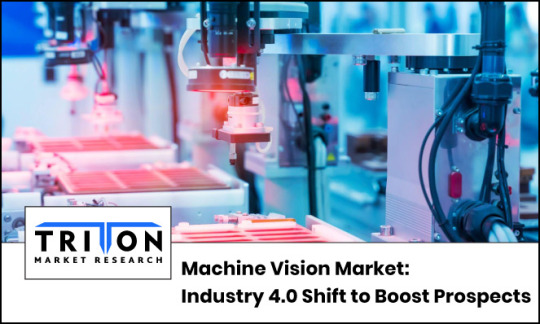
Machine Vision Systems – Deployment Scope across Verticals
The electronics, semiconductor, and automotive industries have been the traditional end-users of MV systems due to the increased need for quality inspection and visual data collection. However, in recent years, more non-traditional sectors have commenced using machine vision components for their specific applications, thereby influencing market growth.
Machine vision sees huge potential in healthcare, which is expected to grow with the highest CAGR of 6.53% in the vertical segment over the forecast period. The pharmaceutical & medical device industries are emerging as leading users of machine vision, with a growing demand for application-specific systems. Pharma companies produce millions of capsules, tablets, caplets, and gels each month, with the help of advanced systems used in the pharmaceutical continuous manufacturing market.
Careful inspection of each of these products is required before they are packed and shipped to distributors. With their high accuracy, ASMV systems largely help in this regard, as they are specially built to accommodate variations in product design and size, among other factors.
Manufacturers in the food industry have also turned to MV systems in order to improve the quality of their products and reduce waste & manual labor costs. They are a cost-effective option to evaluate quality and ensure a high level of consistency, thus offering food product manufacturing companies multiple benefits over manual inspection techniques.
Food & packaging is anticipated to grow at a CAGR of 6.25% in the vertical segment in the period 2023-2030. The food processing sector in Japan has grown significantly due to increased consumer demand. This has prompted firms to implement automation solutions to boost production and influenced the demand for machine vision. Along with South Korea and China, the country accounts for the major revenue share of the Asia-Pacific machine vision market, which is expected to record a CAGR of 6.66% over the estimated period.
Prospects in the Coming Years
Artificial intelligence and machine learning, along with emerging technologies like computational, non-visible, and 3D imaging, have bolstered the efficiency of machine vision systems, which are being increasingly adopted across a range of manufacturing industries. In February 2022, Basler AG expanded its 3D imaging offering by adding an industrial-grade stereo camera series to its existing product portfolio, recording increased sales.
Furthermore, manufacturing hubs like China and Germany are upgrading to fully automated smart factories to stay ahead of competing nations. The United Arab Emirates also established the Mobilis smart factory in Dubai, deploying advanced technologies like robotics, the Internet of Things (IoT), and cloud computing for its manufacturing processes. The adoption of Industrial IoT, which links production technology with information technology, has led to a renaissance in the field of machine vision. Its integration facilitates extensive data capture and leverages analytics to optimize factory operations.
Final Words
Machine vision will play a crucial role in the move towards Industry 4.0, especially with the advancements in data analytics. Agile and precise MV systems offer 100% product inspection, low false rates, and real-time quality control. Data captured from these systems can be used along with centralized data analytics & visualization technologies in order to gain deeper insights into improving product quality, yield, and business processes. Thus, industries are increasingly employing advanced tech-integrated systems to broaden capacities and gain a competitive advantage, which will bolster the machine vision market’s development prospects in the journey towards automation.
#Machine Vision Market#Machine Vision#Automation#Industrial Automation#market research reports#market research report#triton market research
0 notes
Text
3D Machine Vision Market - Global Opportunity Analysis and Industry Forecast (2020-2027)
Meticulous Research®—a leading global market research company published a research report titled “3D Machine Vision Market by Component (Hardware, Software), Product, Application, End-User (Industrial [Automotive, Electronics & Semiconductor, Food & Beverage], Commercial [Healthcare, ITS], Government), and Geography—Global Forecasts to 2028.”
According to this latest publication from Meticulous Research®, the 3D machine vision market is projected to reach $3.1 billion by 2028, growing at a CAGR of 12.1% during the forecast period. This market is largely driven by the growing demand for automated quality inspection technologies, vision-guided robotic systems, and the advent of Industry 4.0.
However, depth errors caused due to shiny surfaces and complexity in integrating 3D machine vision systems are expected to hamper the growth of this market to a certain extent.
The 3D machine vision market is segmented based on component (hardware [camera, frame grabbers, optics, lighting, others], software), product (PC-based, smart camera), application (quality assurance & inspection, positioning & guidance, measurement, identification, and sorting), and end-user (industrial [automotive, pharmaceuticals & chemicals, electronics & semiconductor, printing & labeling, food & beverage, glass & metal, others], commercial [healthcare, intelligent transportation system, logistics], government [security & surveillance, military & defense]). The study also evaluates industry competitors and analyses the market at the country level.
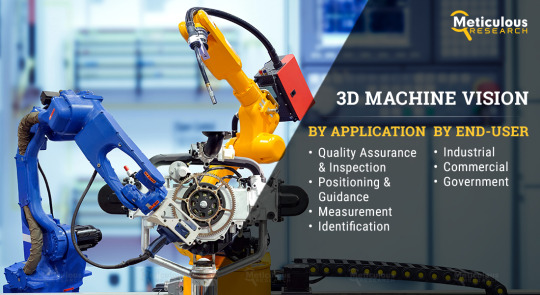
Download Sample of This Strategic Report: https://www.meticulousresearch.com/download-sample-report/cp_id=5138
Scope of the Report:
3D Machine Vision Market, by Component
Cameras
Frame Grabbers
Optics
Lighting
Others
3D Machine Vision Market, by Product
PC-based
Smart Camera
3D Machine Vision Market, by Application
Quality Assurance & Inspection
Positioning & Guidance
Measurement
Identification
Sorting
3D Machine Vision Market, by End-User
Automotive
Pharmaceuticals & Chemicals
Electronics & Semiconductor
Printing & Labeling
Food & Beverage
Glass & Metal
Others
Healthcare
Intelligent Transportation Systems
Logistics
Security & Surveillance
Military & Defense
3D Machine Vision Market, by Geography
U.S.
Canada
Germany
U.K.
France
Italy
Rest of Europe
China
Japan
India
South Korea
Rest of Asia-Pacific
Access full Report Description, TOC, Table of Figure, Chart, etc: https://www.meticulousresearch.com/product/3D-machine-vision-market-5138
Based on component, the 3D machine vision market is segmented into hardware and software. The software segment is expected to grow at a faster CAGR during the forecast period. The high growth rate of this segment is attributed to the increasing demand for new and upcoming software for varied applications of 3D machine vision systems.
Based on product, the 3D machine vision market is segmented into PC-based and smart cameras. The smart cameras segment is expected to grow at a higher CAGR during the forecast period. The high growth rate of this segment is attributed to its rapidly increasing demand due to features such as compact design, lower cost, ease of installation, and reduced need for peripheral devices. However, the PC-based segment is expected to command the largest revenue share of the 3D machine vision market in 2021.
Based on application, the 3D machine vision market is segmented into quality assurance & inspection, positioning & guidance, measurement, identification, and sorting. The sorting segment is expected to grow at the highest CAGR during the forecast period. Adoption of vision-guided robotic systems and widespread usage in the food & beverage sector are some of the factors contributing to the growth of this segment.
Based on the end-user, the 3D machine vision market is segmented into industrial and government. Under the industrial segment, the food & beverage sector is expected to grow at the highest CAGR during the forecast period.
Speak with Our Analyst
This research report analyzes major geographies and provides a comprehensive analysis for North America (U.S. and Canada), Europe (France, Germany, Italy, U.K., and Rest of Europe), Asia-Pacific (China, India, Japan, South Korea, and RoAPAC), Latin America, and the Middle East & Africa.
In 2021, Asia-Pacific is poised to command the largest share of the 3D machine vision market, followed by Europe and North America. The large market share of the Asia-Pacific region is mainly attributed to the growth of manufacturing industries and the rapid implementation of robotic processes in countries such as Japan and China.
The key players operating in the 3D machine vision market are Cognex Corporation (U.S.), Keyence Corporation (Japan), ISRA Vision AG (Germany), Sick AG (Germany), Basler AG (Germany), Omron Corporation (Japan), National Instruments (U.S.), LMI Technologies (Canada), Sony Corporation (Japan), Stemmer Imaging (Germany), Teledyne Technologies (U.S.), Canon Inc. (Japan), Torvidel AS (Norway), Balluff GmBH (Germany), and Industrial Vision System (U.K.).
SPECIAL OFFER (Click Here)
Key questions answered in the report-
Which are the high-growth market segments in terms of component/product/application/end-user/region?
What was the historical market for 3D machine vision across the globe?
What are the market forecasts and estimates for the period 2021–2028?
What are the major drivers, restraints, and opportunities in the 3D machine vision market?
Who are the major players in the 3D machine vision market?
How is the competitive landscape, and who are the market leaders in the 3D machine vision market?
What are the recent developments in the 3D machine vision market?
What are the different strategies adopted by the major players in the 3D machine vision market?
What are the geographical trends and high growth regions/countries?
Contact Us:
Meticulous Research®
Email- [email protected]
Contact Sales- +1-646-781-8004
Connect with us on LinkedIn- https://www.linkedin.com/company/meticulous-research
#3D Machine Vision Market#3D Machine Vision#3D Machine#Machine vision market#Machine Vision#electronics#semiconductor#business#market research#automation
0 notes
Text
youtube
LR-LINK Flagship Series | More Stable and Compatible
Real USB3.0 image capture card, 5G bandwidth per port, enjoy 5G high-speed transmission.
0 notes
Text

Heliovision provide many types of services like Machine vision, Feasibility Studies, Support and Consulting, Vision Training. All these services provide image stability and quality are great and experience.
1 note
·
View note
Link
0 notes
Text


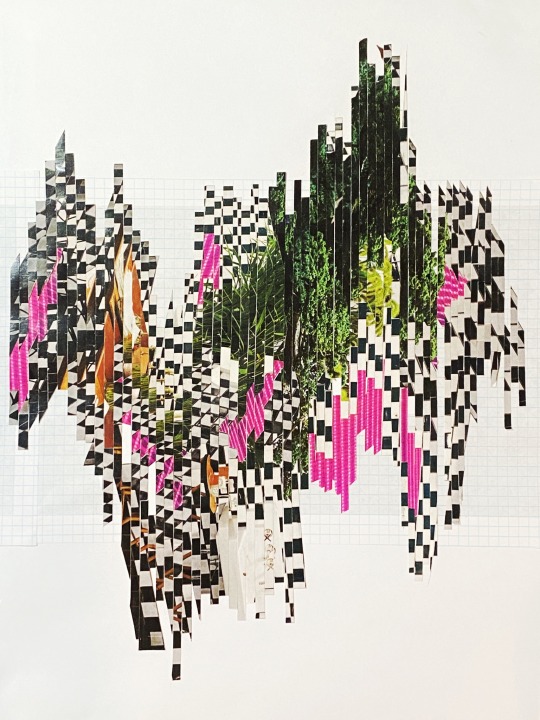
Collage studies w/ artifacts
1 note
·
View note
